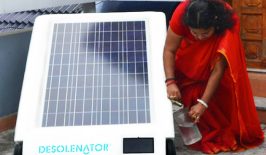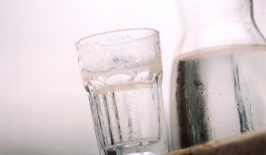Today, March 22nd, is World Water Day, and this week RESET has added fresh focus to the importance of water.
While World Water Day encapsulates all aspects of Earth’s most precious resource, including a focus on minimising flooding, lessening the impact of droughts, recycling water, and reducing contamination, the availability of water is, for many, an on-going concern.
Providing off-grid fresh water is not a simple task, but solar-powered fresh water production is now a possibility for anywhere with sunshine.
Having relible access to potable water from state and utility mains supplies is an everyday miracle that we all too often take for granted. For those less fortunate, or perhaps situated in rural or remote areas, water needs are vastly more complex and vastly more expensive – scarcity, quality, and water-borne diseases are significant problems.
Arizona-based startup Zeromass offers one interesting new approach to this problem: solar panels provide energy to capture moisture from the air to and supply clean drinking water. No power is generated – only water.
So how does it work?
Zeromass’s Source innovation follows the thermodynamic principles of hygroscopy – dehumidifying the air. Airflow is drawn into the unit with a fan, where hygroscopic materials absorb water vapour, even in areas with extremely low humidity. The vapour is collected in a condenser, which flows into a reservoir.
Zeromass also add calcium and magnesium to the water, for taste purposes, while the water is piped to a designated tap or other outlet.
A single panel can capture between two to five litres of water daily, depending on the prevailing conditions, and a typical rooftop system of two panels – capable of generating four to 10 litres of per day – costs approximate 4,500 USD, including installation, along with a water line running from the tank to a tap.
The US-based company is also pushing for businesses to utilise a Source system on their rooftops, to cut down on expensive and environmentally-unfriendly bottled water. The company claims that the investment is paid back within two to four years, due to the large markup on bottled water.
The idea of sunlight and air being all you need to get ‘renewable’ water does sound enticing – and capturing water from the atmosphere is thought to be a sustainable practice given evaporation is occuring at all times, but the Zeromass system is expensive. And while the attached solar panels provide an all-in-one system, it’s also limited by being contained, and, for example, prevents any other existing solar panels from being used to power the product.
There are more socially-responsible models in existence, including the Sunglacier DC03, from a Dutch company using inexpensive Peltier elements to draw water from the surrounding air by creating a hot-cold temperature difference on an element.
It’s a method that only captures half a cup of water or so every six hours, but at tiny expense and almost no maintenance, and can run on as little as a 30-50W solar panel. Plus, Sunglacier are giving away the design for free to encourage people to get involved.
Ultimately, water conservation methods and recycling grey water will be far more cost effective and useful for the wider population.
This week we also delved into portable system desalination, looking at the Desolenator. Also using a solar panel, the system can take seawater or rainwater and produce around 15 litres of distilled water per day. The system doesn’t require maintenance, fresh filters or supplies, and it is hoped that it will last up to 20 years, giving it significant longevity. Desolenator is hoped to be available in 2019.
Overall, the Zeromass Source system – available now, depending on your location – represents an intriguing niche, but probably not more than that for now.






